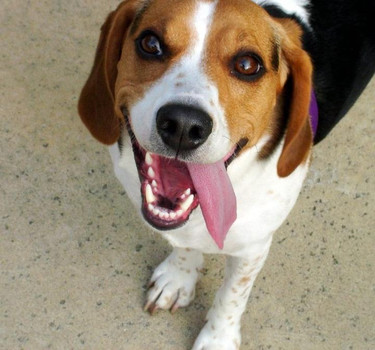Helping Your Dog Recover After Surgery
Dec 16th 2017
Does your dog have an upcoming surgery? To ensure a speedy recovery, you'll want to follow some basic steps.
Follow the Veterinarian's Post-Op Instructions
When your dog has the surgery, the veterinarian should provide you with a list of post-op instructions. Depending on the procedure that was performed, this may include things like when and how to change your dog's dressing, cleaning the wound, applying antibiotic ointment, etc. Be sure to familiarize yourself with these post-op instructions and call your veterinarian if you have any questions or concerns.
Isolate Your Dog from Other Pets
If you have multiple dogs in your home, should keep isolate the one that has recently undergone surgery. There are a couple of reasons for this, one of which is the simple fact that your dog's would may re-open when playing with other dogs. Even if your dogs "play nice," there's always the possibility of stitching coming loose. Furthermore, allowing your dogs to be in the same room after surgery exposes them to unnecessary germs, which could lead to infection and/or illness. Just to be on the safe side, keep your dog isolated after surgery.
Keep Your Dog Hydrated
Dogs will often remain lethargic and weak after being sedated for surgery. Subsequently, they may not drink enough water to stay properly hydrated. As an owner, you should encourage your dog to drink plenty of fluids after bringing them home from the vet's office. If your dog isn't drinking from the water dish, try feeding them wet food or create a mixture of water and dry food. Keeping your dog hydrated is essential to a fast and healthy recovery.
Don't Let Your Dog Jump!
Your dog must take it easy during the days/weeks following their surgery -- and this means NO jumping on or off the furniture. It may seem harmless enough, but allowing your dog to jump up and down unrestricted could result in them in tearing out their stitches. The good news is that you can allow your dog to reach the couch and other furniture by investing in Puppy Stairs or Ramps. Placing one of these accessories next to the furniture creates a convenient walkway, which is a far better choice than jumping.
These are just a few tips to keep in mind when your dog has surgery. Above all else, though, listen to the veterinarian's advice regarding post-op care.
 It's not uncommon for dogs to stop drinking after surgery. The weakness and lethargy associated with sedation affects their bodies in numerous ways, including thirst and appetite. Being that dogs need water to survive, however, seeing your dog refrain from drinking can be frightening. With a little bit of work, however, you can encourage your dog to drink after surgery.
It's not uncommon for dogs to stop drinking after surgery. The weakness and lethargy associated with sedation affects their bodies in numerous ways, including thirst and appetite. Being that dogs need water to survive, however, seeing your dog refrain from drinking can be frightening. With a little bit of work, however, you can encourage your dog to drink after surgery.
PLACE WATER DISH AT APPROPRIATE HEIGHT
First and foremost, make sure your dog's water bowl/dish is placed at the appropriate height -- and no, this isn't the ground. The water bowl should be placed high enough so your dog can reach it without bending their neck, but not so high that your dog is forced to look upwards to reach it. Keeping the water dish at "head-height" will allow your dog to drink without straining their neck, which should encourage them to drink after surgery.
PLACE WATER DISH NEAR YOUR DOG
Dogs are often too fatigued after surgery to venture into the kitchen or their "normal" eating and drinking area. So if your dog isn't drinking, try placing the water dish next to them. You can dip your fingers in it and gently splash it on their face. Doing so may trigger an innate reaction that causes your dog to drink.
CLEAN THEIR WATER DISH
You wouldn't drink out of a dirty cup, would you? Well, some dogs may not drink out of a dirty water bowl. Try cleaning your dog's water bowl, wiping away any residue that has formed inside. Having a fresh bowl from which to drink could be just what your dog needs. And besides, it certainly can't hurt!
SHOULD I BE CONCERNED?
In most cases, the answer is no. As long as your dog has access to clean water, they won't thirst themselves to death. With that said, complications may arise from the surgery that could prevent your dog from drinking, in which case it's critical that you take your dog to the veterinarian for an examination. If your dog has drank anything for 48 hours, call the veterinarian immediately, as this could be a sign of a serious complication or other underlying condition.

